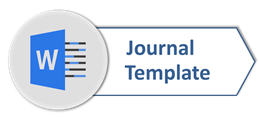Analysis of Jokowi’s Commissive Speech Acts in 2014 and 2019 Inaugural Address: A Pragmatic Study
Abstract
Full Text:
PDFReferences
Aminuddin. 1990. Pengembangan Penelitian Kualitatif dalam Bidang Bahasa dan Sastra. Malang: Yayasan Asih Asah Asuh.
Andewi, Widi & Waziana, Winia. 2019. An analysis of teacher’s speech acts in teaching and learning process. Teknosastik: Jurnal Bahasa dan Sastra, 17(1), 29-34.
Anthony, L. 2019. AntConc [Computer Software]. Tokyo: Waseda University.
Dosia, Putri Ayu & Rido, Akhyar. 2017. Production of English diphthongs: A speech study. Teknosastik: Jurnal Bahasa dan Sastra, 15(1), 21-35.
Dunmire, P. L. 2005. Preempting the future: Rhetoric and ideology of the future in political discourse. Discourse and Society, 16(4), 481-513.
Fuller, J. M. & Wardaugh, R. 2015. An Introduction to Sociolinguistics, 7th Edition. United Kingdoms: Wiley Blackwell.
Hadiati, C. 2019. Felicity conditions of the speech acts in Banyumasan daily conversation. Theory and Practice in Language Studies, 9(6), 700.
Loko, C. D. 2018. Analysis of speech acts in Donald Trump’s acceptance speech. Revue Internationale de Linguistique Appliquée, de Littérature et d’Education, 1(1), 234-248.
Miles, M. B., Huberman, A. M. & Saldana, J. 2014. The Analysis of Qualitatitive Data. USA: SAGE Publications.
Priyatmojo, A. S. 2012. Indonesian political language. UNNES International Conference on ELTL, (1), 102-108.
Putri, P. D. S. P. 2018. Representative and commissive illocutionary acts in Donald Trump’s inauguration speech, 22, 1057-1062.
Schmid, H. J. 2000. English Abstract Nouns as Conceptual Shells. Berlin: Mouton de Gruyter.
Searle, J. R. 1976. A classification of illocutionary acts. Language in Society, 1–23.
Ulum, M. & Sutopo, D. 2018. A comparison between Trump’s and Clinton’s commissive speech act in America’s presidential campaign speech. English Education Journal, 8(2), 221–228.
Vergaro, C. 2018. Illocutionary Shell Nouns in English. Switzerland: Peter Lang.
W.Creswell, J. 2012. Educational Research: Planning, Conducting and Evaluating Quantitative and Qualitative Research, 4th Edition. Boston: Pearson.
Yule, G. 1996. Pragmatics. Oxford: Oxford University Press.
DOI: https://doi.org/10.33365/ts.v18i2.676
Refbacks
- There are currently no refbacks.
Copyright (c) 2020 Salwa Fadila Firdaus, Lia Maulia Indrayani, Ypsi Soeria Soemantri

This work is licensed under a Creative Commons Attribution-ShareAlike 4.0 International License.
Teknosastik: Jurnal Bahasa dan Sastra
Publisher: Universitas Teknokrat Indonesia
Address: Zainal Abidin Pagaralam Street 9-11, Bandar Lampung, Indonesia
Website: https://ejurnal.teknokrat.ac.id/index.php/teknosastik/index

Creative Commons Attribution-ShareAlike 4.0 International License






